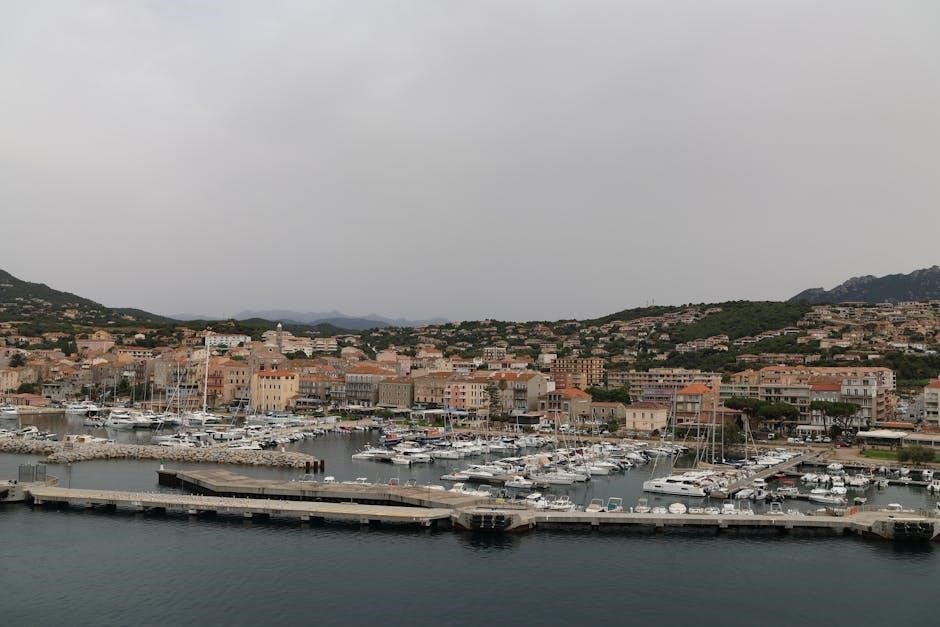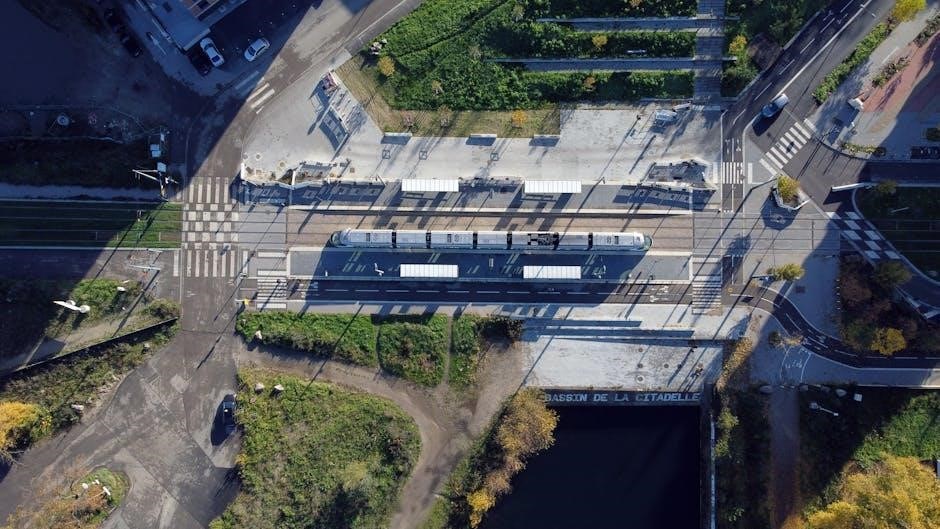Middle Eastern wars are deeply rooted in historical, political, and cultural complexities․ Studying these conflicts reveals their profound impact on global stability and regional dynamics, offering valuable insights into their origins and evolution․
1․1 The Definition and Evolution of the Term “Middle East”
The term “Middle East” emerged in the early 20th century, popularized by British influences, replacing earlier descriptors like “Near East” or “Orient․” Initially, it referred to the region between Europe and East Asia, encompassing areas like the Arabian Peninsula, Iran, and Turkey․ Over time, its definition expanded to include North Africa, Israel, and parts of Central Asia, reflecting geopolitical shifts and cultural exchanges․ Today, the term remains a cornerstone in understanding the region’s complex history and conflicts․
1․2 The Significance of Studying Middle Eastern Conflicts
Studying Middle Eastern conflicts is crucial for understanding the region’s strategic importance, geopolitical dynamics, and historical roots of violence․ Analyzing these wars provides insights into how colonial legacies, religious tensions, and resource competition shape global stability․ It also highlights the role of external powers in exacerbating regional instability, offering lessons for diplomacy and conflict resolution in one of the world’s most volatile regions․

Major Conflicts in the Middle East: An Overview
The Middle East has witnessed numerous pivotal conflicts, including the Arab-Israeli Wars and the Iran-Iraq War, shaped by colonial legacies, resource disputes, and geopolitical rivalries․
2․1 The Arab-Israeli Wars: Key Events and Implications
The Arab-Israeli Wars represent a series of pivotal conflicts shaping the Middle East․ Key events include the 1948 Arab-Israeli War, the 1967 Six-Day War, and the 1973 Yom Kippur War․ These conflicts have redrawn borders, deepened regional tensions, and influenced global geopolitics․ The 1948 war established Israel’s statehood, while the 1967 war expanded its territories, fueling ongoing disputes over Palestine․ Historical documents like the 1917 Balfour Declaration and the 1939 British White Paper underscore the roots of these conflicts, highlighting the complex interplay of colonial legacies, nationalism, and territorial claims that continue to resonate today․
2․2 The Iran-Iraq War: Causes, Consequences, and Legacy
The Iran-Iraq War (1980–1988) stemmed from territorial disputes, ideological tensions, and regional power struggles․ The conflict caused immense human suffering, economic devastation, and a profound impact on global oil supplies․ Key consequences included hundreds of thousands of casualties, widespread use of chemical weapons, and lasting geopolitical instability․ The war’s legacy continues to influence regional dynamics, as highlighted in works like Georges Corm’s analysis of Middle Eastern conflicts․

Humanitarian Impact of Middle Eastern Wars
Middle Eastern wars have caused immense human suffering, with millions displaced, civilian casualties, and long-term psychological trauma․ Refugee crises and aid shortages exacerbate the devastation․
3․1 Civilian Casualties and Refugee Crises
The human toll of Middle Eastern wars is staggering, with countless civilians caught in the crossfire․ Millions have been displaced, fleeing conflict zones to seek refuge in neighboring countries․ Refugee crises strain local resources, while the psychological trauma of war lingers for generations․ Civilian casualties often result from indiscriminate violence, with hospitals overwhelmed by victims of bombings and armed clashes․ The humanitarian crisis demands urgent global intervention․
3․2 The Role of International Organizations in Conflict Resolution
International organizations play a pivotal role in addressing Middle Eastern conflicts, providing humanitarian aid and mediating peace talks․ The UN, EU, and NGOs work tirelessly to alleviate suffering, while enforcing ceasefires and promoting dialogue․ Their efforts, though often challenging due to regional complexities, remain crucial in supporting affected populations and fostering stability in one of the world’s most volatile regions․

Geopolitical Rivalries in the Middle East
Middle Eastern conflicts are fueled by competing regional powers and global interests․ Iran-Saudi rivalry and external interventions shape the region’s instability, as detailed in historical analyses․
4․1 The Iran-Saudi Arabia Rivalry and Regional Instability
The Iran-Saudi rivalry fuels sectarian tensions and instability across the Middle East․ Historical roots, including the 1917 Balfour Declaration and 1939 British White Paper, shaped regional dynamics․ This competition for influence destabilizes nations, as both powers support opposing factions in conflicts, exacerbating tensions and hindering peace efforts in the region, as detailed in analyses of Middle Eastern wars․
4․2 The Influence of Global Powers on Middle Eastern Conflicts
Global powers have long shaped Middle Eastern conflicts, with historical interventions like the 1917 Balfour Declaration and 1939 British White Paper influencing regional dynamics․ Today, nations such as the U․S․, Russia, and European countries continue to exert influence, often supporting opposing factions․ This external involvement complicates conflicts, as seen in Syria and Yemen, where global powers’ interests exacerbate instability, as analyzed in studies of the region’s wars․
Modern Conflicts and Their Roots
Modern Middle Eastern conflicts, such as the Syrian Civil War, stem from historical tensions, political instability, and external interventions, as explored in recent analytical books and studies․
5․1 The Syrian Civil War: A Multifaceted Crisis
The Syrian Civil War, spanning over a decade, is a complex conflict rooted in political repression, sectarian divisions, and foreign intervention․ It has surpassed World War II in duration, causing immense human suffering and regional instability․ External powers, including global and regional actors, have exacerbated the crisis, turning it into a proxy war․ The conflict has led to massive displacement, humanitarian crises, and long-term societal fragmentation, as documented in recent studies and analyses․
5․2 The Yemeni Civil War: Humanitarian Crisis and Geopolitical Dimensions
The Yemeni Civil War has erupted into a devastating humanitarian crisis, marked by widespread civilian casualties, displacement, and famine․ The conflict, fueled by sectarian tensions and regional rivalries, has drawn in global powers, with Saudi Arabia and Iran supporting opposing factions․ The war’s geopolitical dimensions have amplified its complexity, turning it into a proxy conflict with far-reaching implications for regional stability and international relations․
Resources for Studying Middle Eastern Wars
Explore extensive collections of Middle Eastern conflict literature, including eBooks and PDFs, available on platforms like Vivlio, offering deep insights into historical and contemporary wars․
6․1 Recommended Books and eBooks on Middle Eastern Conflicts
Notable works include Georges Corm’s “Leban, les guerres de l’Europe et de l’Orient” and David Elkaïm’s analysis of Proche-Orient conflicts․ Maxime Rodinson’s “Islam, politique et croyance” offers cultural insights․ These books, along with others by renowned authors, provide deep historical and political context․ Many are available as eBooks and PDFs on platforms like Vivlio, offering accessible resources for comprehensive understanding of Middle Eastern wars․
6․2 Where to Download PDFs of Relevant Literature
PDFs of books on Middle Eastern conflicts can be downloaded from platforms like Vivlio, which offers a wide range of eBooks in ePub and PDF formats․ Academic databases and online libraries also provide access to scholarly works․ Ensure to verify the credibility of sources and respect copyright laws when downloading literature for research purposes․
Key Authors and Their Contributions
Authors like Georges Corm, Maxime Rodinson, and David Elkaïm provide deep insights into Middle Eastern conflicts through their influential works, shaping historical and political understanding of the region․
7․1 Notable Historians and Analysts Specializing in the Middle East
Notable historians like Georges Corm and Maxime Rodinson have extensively analyzed Middle Eastern conflicts․ Corm’s works on Lebanon and regional dynamics, alongside Rodinson’s studies on Islam and politics, provide critical insights․ Their contributions, available in PDF formats, offer historical depth and political context, essential for understanding the region’s complexities and ongoing struggles․
7․2 Influential Works That Shaped Understanding of the Region
Influential works like Georges Corm’s Leban, les guerres de l’Europe et de l’Orient and David Elkaïm’s studies on the Proche-Orient provide deep insights into the region’s conflicts․ These books, available in PDF, explore historical roots, political dynamics, and cultural complexities, offering a comprehensive understanding of Middle Eastern wars and their enduring impact on global geopolitics and human societies․
The Role of Media and Propaganda in Shaping Perceptions
Media coverage of Middle Eastern wars often reflects biases, shaping public opinion and perceptions․ Propaganda amplifies these narratives, influencing global views on conflicts and their complexities․
8․1 Media Coverage of Middle Eastern Conflicts
Media coverage of Middle Eastern conflicts often reflects regional and political biases, shaping public perception․ Literature highlights how media narratives influence understanding, with books like Georges Corm’s works critiquing biased reporting․ The portrayal of wars in Syria and Yemen varies widely across global outlets, emphasizing the challenge of presenting balanced, unbiased information in a region marked by complex geopolitical dynamics․
8․2 The Impact of Propaganda on Public Opinion
Propaganda significantly shapes public opinion on Middle Eastern conflicts, often distorting facts and amplifying biases․ Books like Georges Corm’s and Maxime Rodinson’s works highlight how selective narratives sway perceptions, fostering polarization․ The portrayal of wars in Syria and Yemen in literature reveals how propaganda manipulates empathy and support, influencing global policies and regional stability, as noted in various analytical works on the subject․

The Future of the Middle East: Prospects for Peace
The Middle East’s path to peace requires diplomacy, collaboration, and addressing historical grievances․ Books highlight the need for dialogue to resolve conflicts and foster stability in the region․
9․1 Potential Solutions to Ongoing Conflicts
Experts suggest that lasting peace in the Middle East requires a combination of diplomatic efforts, international mediation, and policy reforms․ Books on the region emphasize the importance of addressing historical grievances and fostering dialogue between conflicting parties․ Regional cooperation and the involvement of global powers are also seen as critical in resolving disputes and achieving sustainable stability․
9․2 The Role of Diplomacy in Achieving Regional Stability
Diplomacy plays a crucial role in resolving Middle Eastern conflicts by fostering dialogue and negotiations․ Books on the region highlight how diplomatic efforts can bridge divides between nations and factions․ Historical examples, such as peace treaties and international agreements, demonstrate the potential for diplomacy to stabilize the region․ Sustained diplomatic engagement is essential for achieving lasting peace and cooperation in the Middle East․
Middle Eastern studies remain vital for understanding global dynamics․ Books on regional conflicts offer insights into historical complexities, fostering awareness and promoting peaceful resolutions through education and dialogue․
10․1 The Importance of Understanding the Region’s Complexities
Understanding the Middle East’s intricate history, cultures, and conflicts is essential for grasping global geopolitics․ Books on regional wars provide deep insights into historical tensions, political dynamics, and societal structures․ This knowledge aids in navigating modern challenges, fostering empathy, and informing policies aimed at peace and cooperation in a region pivotal to global stability and international relations․
10․2 The Role of Education in Promoting Peace and Awareness
Education plays a vital role in promoting peace and awareness by fostering understanding of diverse perspectives․ Books on Middle Eastern conflicts offer insights into historical and cultural contexts, helping to break down stereotypes․ Through dialogue and empathy, education can reduce tensions and promote peaceful solutions, ultimately contributing to global understanding and stability․





